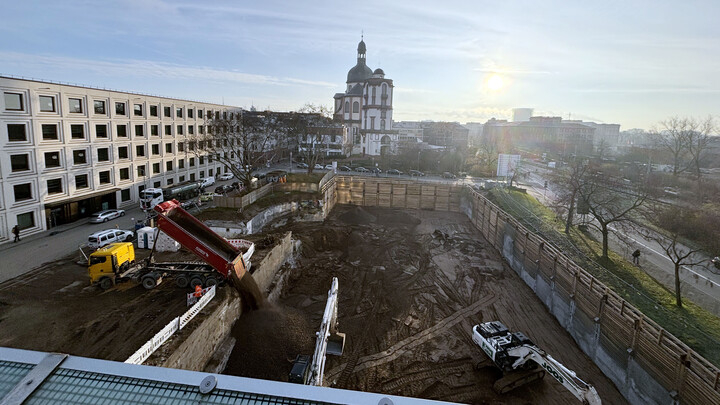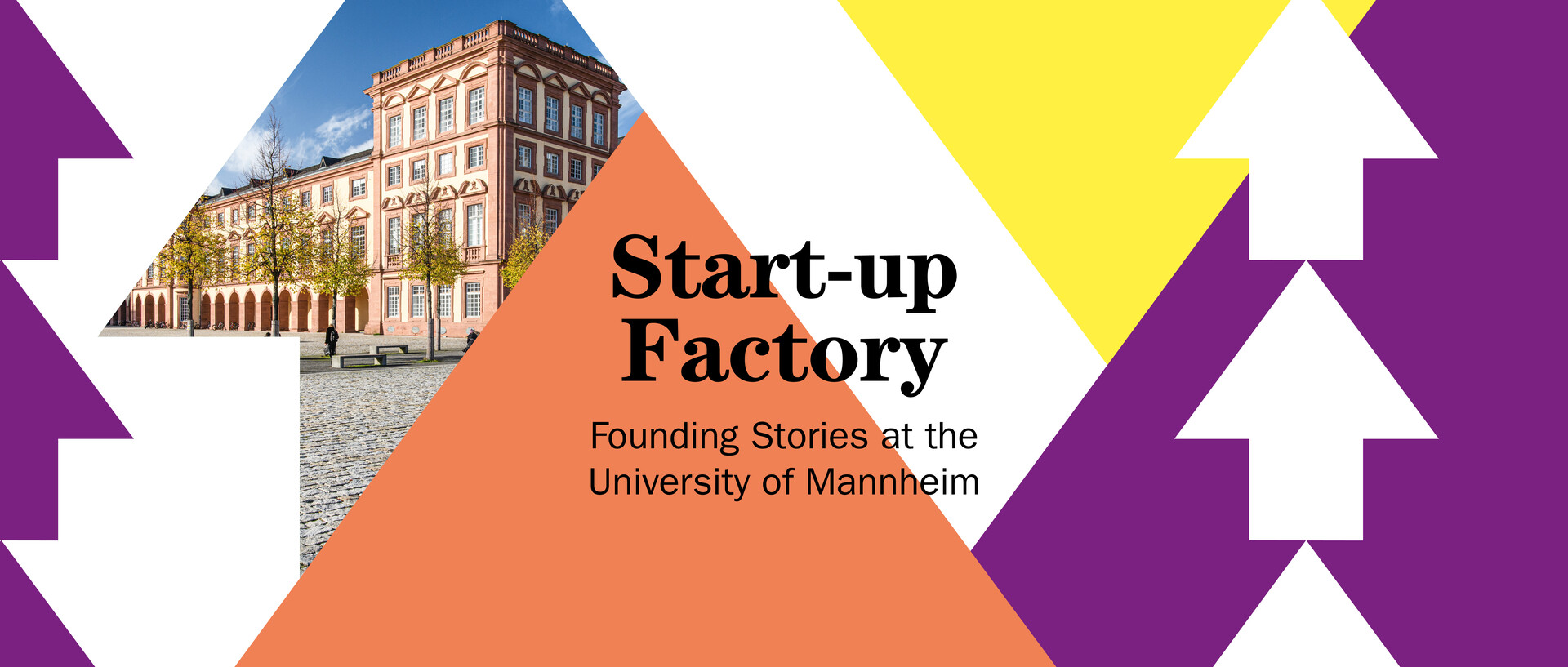More Than Just Concrete: The New UNIT Building Raises the Bar
A modern new addition in the heart of the city: By 2027, a cutting-edge facility for the University’s IT department (UNIT) will rise at the A5 construction site—sustainable, innovative, and built for the future. But this project is more than just another functional structure. Project managers Matthias Heitz and Burkhard Gronert from the University's Construction Department (Dezernat III) share their insights on the unique qualities and special challenges shaping its construction.

On this crisp winter morning, the thermometer reads minus two degrees. The construction site between the School of Social Sciences in A5 and the research and teaching building in B6, 30–32, is bustling with activity. At the bottom of the eight-meter-deep excavation pit, two excavators are at work, carefully using their metal arms to spread gravel across the frozen ground where the foundation of the new building will soon take shape. Overhead, a truck loudly dumps fresh material onto the construction site, while another fully loaded vehicle waits its turn on the street. “When excavation was in full swing, up to six trucks were lined up here for weeks,” says Burkhard Gronert, looking over the construction fence. While little of the building’s structure is visible yet, the sheer dimensions of the project are already becoming apparent.
A construction project full of challenges
Construction for the new UNIT building has been underway since September 2024, but it hasn’t been without its difficulties. “Part of the site sits on the remnants of an artificial lake from the mid-19th century,” explains Gronert. “On top of that, a buried World War II bunker presents unique challenges for structural stability and utility installation.” Despite these hurdles, the project remains on schedule, with completion expected by early 2027.
But the building doesn’t just boast state-of-the-art technology, it also raises the bar in sustainability. With its combined use of recycled concrete, CO₂-reduced cement, and an innovative hybrid timber design, the project is a model for the future. “Building with wood isn’t just sustainable—it’s also adaptable,” says Matthias Heitz, head of the Construction Department. “If needed, the building can be repurposed later without major structural changes.”
Likewise, the energy concept demonstrates how technological progress and environmental responsibility can go hand in hand. Solar panels on the roof and façade are expected to generate over 130,000 kilowatt-hours (kWh) per year—enough energy to power an electric car for 16 trips around the world. “This will cover much of the daily electricity needs for teaching and office operations,” Heitz explains. Additionally, the waste heat from the data center will be used to heat the building in winter and cool it in summer.

Tradition meets innovation
Beyond housing the data center, the 3,100-square-meter building will feature modern workspaces for up to 150 employees. “Half of the workstations will be designed as multi-space areas, complemented by focus rooms and informal collaboration spaces,” says Gronert. To him, one of the most striking features is the so-called “Mittelzone,” or central atrium, where a seating staircase will connect all floors, creating meeting spaces that encourage interaction. “This will be the social heartbeat of the building,” Gronert adds.
The ground floor will feature a large seminar room, several smaller training rooms, an IT help center for students, and a spacious foyer that can also serve as an event space. “The ‘brain’ of the building will be located underground: the server room and associated technical areas,” explains Heitz. Even the outdoor areas have been thoughtfully designed, featuring biodiverse green spaces, a low-maintenance green roof, accessible entrances, and ample bike parking, further reinforcing the vision of a modern campus.
While a model of innovation, the new UNIT building also represents a successful combination of old and new. “It blends harmoniously with its surroundings, right near the historic Mannheim Palace,” Gronert emphasizes. With its modern urban façade and fully landscaped outdoor spaces, the building reflects its technological purpose without disrupting the baroque charm of nearby landmarks like the Jesuit Church and Mannheim Observatory. “We’re creating a new hub that blends tradition and progress.”
Text: Patrick Kullmann / April 2025
